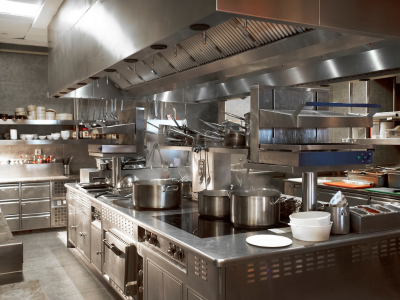A line cook plays a critical behind-the-scenes role in ensuring a restaurant runs smoothly. They work in a fast-paced environment to prepare and cook the dishes that meet the dining establishment’s standards. Understand what a line cook’s key duties and responsibilities are to gain insight into this essential position.
Table of Contents
Who is a Line Cook?
A line cook is commonly found working in the kitchen of casual dining, family style, fast casual and quick service restaurants. They are tasked with preparing, cooking and plating menu items to order during service hours.

The “line” refers to the kitchen station or equipment set up along the kitchen line where line cooks work to fire off dishes. Depending on the size of the restaurant, there may be multiple line cook stations that cooks are assigned to, such as the:
- Hot appetizer station
- Salad station
- Sauté station
- Broiler station
- Fryer station
Line cooks report to the executive chef or sous chefs and kitchen manager. They typically work as part of a culinary team that strives to achieve the kitchen’s goals.
Key Job Duties and Responsibilities Of A Line Cook
A typical shift for a line cook involves multitasking different cooking and preparation duties. Here are some of the main responsibilities associated with this position:
Prep Ingredients
Line cooks start off each shift by measuring, chopping, mixing and processing the ingredients needed for the day’s menus. This “mise en place” allows them to have everything they need ready to assemble dishes during service.

Take and Cook Orders
During open kitchen hours, line cooks take dish orders from servers and kitchen staff and then cook and season the items to specification on the stovetop, grill or in the fryer or oven. They adhere to recipes and standard cook times.

Manage Food Inventory
Line cooks must keep track of ingredient and food item stock throughout service. This means efficiently utilizing what’s available and communicating with the chef when supplies run low so orders aren’t delayed.

Maintain Work Area
In order for a line to run optimally, the cook’s station must remain cleanly and organized. Line cooks continuously clean cooking equipment, tools and surfaces during downtimes.
Follow Safety and Sanitation Protocols
Kitchens involve hot surfaces and sharp cutting tools, so injuries can happen easily. Line cooks are trained to adhere to safety guidelines, such as wearing slip-proof shoes, using protective gloves when handling hot items and preventing cross contamination.
Perform Closing Duties
In addition to their food preparation duties, line cooks help clean up the entire kitchen area at closing time. This includes breaking down the line stations, deep cleaning equipment, emptying grease traps and taking out the garbage.

The Next Steps as a Line Cook
Line cooks are on their feet the majority of every shift. So it takes speed, efficiency, organization and the ability to thrive under pressure. For cooks who want additional responsibility and to expand their culinary capabilities, typical advancement opportunities include:
- Senior line cook roles with inventory and new cook training duties
- Promotion to sous chef or kitchen manager positions
- Opportunities to assist the executive chef in menu planning and recipe development
This behind-the-scenes role keeps the heart of a busy restaurant pumping. Learn more about typical line cook salaries, job opportunities and training requirements to see if working your way up the culinary ladder is your calling.
FAQs
How does Talent Employment help to reduce hiring risks for businesses?
By staying up-to-date with current laws and regulations, Talent ensures compliance and minimizes risks related to bad hires and misclassification, providing fully secure staffing solutions.
What is the process Talent Employment follows to streamline hiring?
Talent simplifies the hiring process by managing sourcing, screening, interviewing, and onboarding, allowing businesses to focus on retaining top talent efficiently.
Why should a company partner with Talent Employment during busy periods?
Talent can quickly scale up hiring efforts during peak seasons, ensuring businesses have the necessary staff to meet increased demand without delays.
What are the benefits of different hiring models available through Talent?
Talent offers models like direct-hire, temp-to-perm, and probationary engagements, allowing businesses to assess a candidate’s fit before making a long-term commitment.
How much time can businesses save by using Talent Employment for hiring?
Talent’s efficient hiring process can save businesses significant time, allowing managers to focus on other critical responsibilities rather than spending hours on recruitment.
What hidden costs should businesses consider when hiring staff?
Beyond hourly wages, businesses should account for statutory expenses, overhead costs, benefits, training, and risks associated with turnover and theft.
How does Talent Employment ensure cost-effectiveness for businesses?
By providing skilled staff at competitive rates, Talent can help businesses save an average of $80 per day per employee compared to traditional hiring methods.
What makes Talent Employment a preferred choice for over 100 companies?
Many companies choose Talent for their flexibility in staffing needs, from casual to full-time roles, and their proven success rate in providing qualified candidates.
How can businesses get started with Talent Employment for their staffing needs?
Interested businesses can reach out directly to Talent to discuss tailored staffing solutions that meet their specific requirements and increase overall efficiency.

